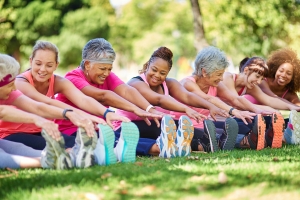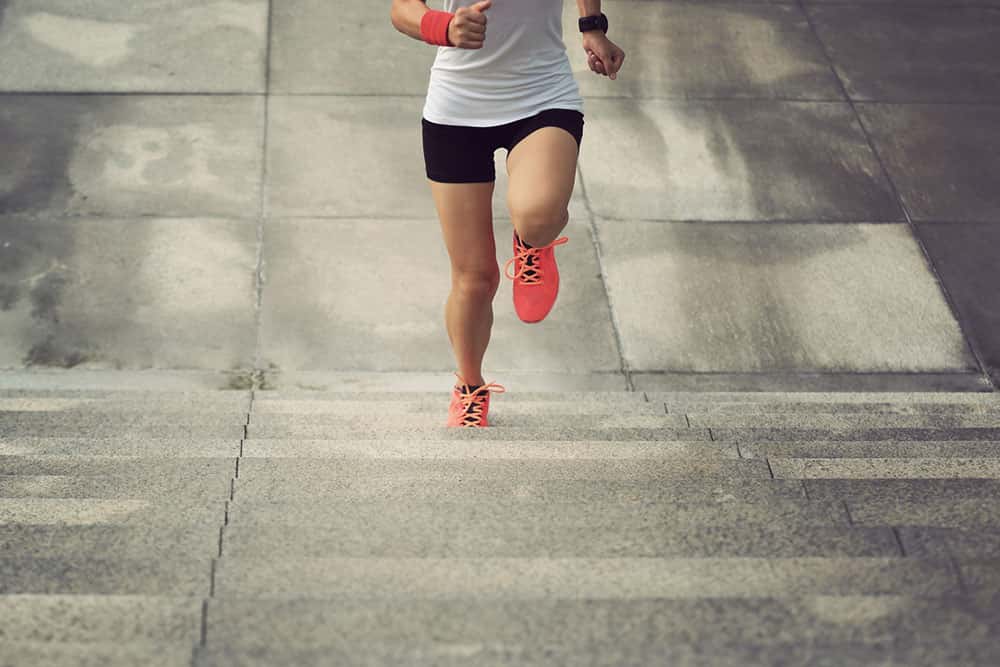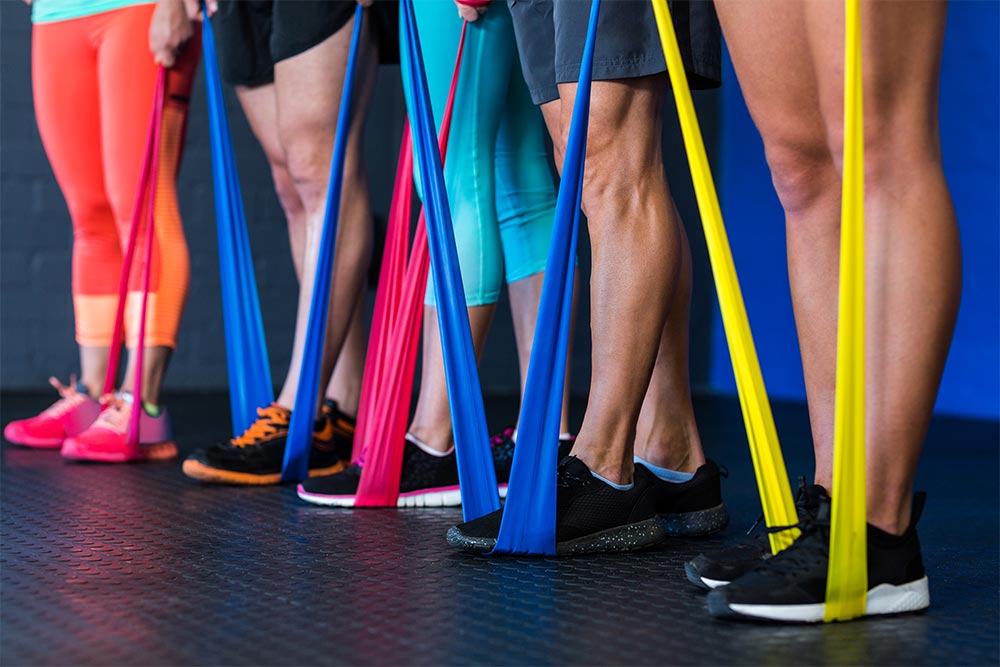3 Exercise Tips to Prevent and Treat Depression

Sara Thompson, M.Sc. in Exercise Science
The 3 Pieces of Advice:
-
Go out and try something. The hardest step is the first one, but once you start exercising you will feel better and be more inclined to continue.
-
Add some high-intensity exercise into your routine. Even a little bit of moderate or vigorous activity can make a big difference in improving your mood.
-
Exercise in a group setting. This will increase your intensity and your likelihood to stick with an exercise routine. If you’d rather not attend a formal class, recruit a friend to exercise with you. You’ll enjoy it more!
The Research
According to the World Health Organization, over 300 million people worldwide are affected by depression. Moreover, depression increases in prevalence as people age and affects women twice as much as men (American Psychiatric Association, 2014).
Physical inactivity has been linked to depressive symptoms and individuals with depression are less likely to engage in physical activity (American Psychiatric Association, 2014), creating a vicious cycle. Numerous studies have reported positive associations between physical activity and depression (Mura et al., 2014), however specific recommendations remain unclear.
Related Article: A Fun Alternative: Trampoline Workouts
The Relationship Between Physical Activity And Depression
Overdorf and colleagues aimed to study the relationship between physical activity and depression (Overdorf et al., 2016). Due to their sedentary nature and high prevalence of depression, this research team tested older women. The researchers addressed three main questions:
-
Is there is a relationship between intensity of physical activity and depression
-
Whether group exercise is more effective in reducing depressive symptoms than solitary exercise
-
If a prescribed exercise program can decrease depressive symptoms
 To address the first two study questions, 65 healthy women over the age of 60 were recruited. Participants performed two questionnaires: the International Physical Activity Questionnaire (IPAQ) and the Beck Depression Inventory (BDI). The IPAQ assessed physical activity by estimating the amount of time individuals engage in physical activity per week. It further categories physical activity into
To address the first two study questions, 65 healthy women over the age of 60 were recruited. Participants performed two questionnaires: the International Physical Activity Questionnaire (IPAQ) and the Beck Depression Inventory (BDI). The IPAQ assessed physical activity by estimating the amount of time individuals engage in physical activity per week. It further categories physical activity into
-
Low intensity
-
Moderate intensity
-
Vigorous intensity.
The BDI is a self-reporting 21-item scale, which assesses depressive symptoms.
For the second experiment, the researchers recruited healthy older women who did not participate in the first experiment (mean age=81±2.73 years). The women assessed their depressive symptoms via the BDI before and after an exercise intervention. The exercise intervention consisted of 6 weeks of line dancing, in which the participants performed three 1-hour sessions per week. Results demonstrate that the participants of the line dancing intervention had significantly improved scores on the BDI following the 6-week intervention.
Treat Depression
Engagement in physical activity has previous been shown to be associated with decreased depressive symptoms.
However, this study found that this correlation was only present during moderate to vigorous physical activity, suggesting that intensity of exercise is important. Additionally, individuals who engage in regular group exercise such as exercise classes are more physically active than those who exercise on their own. Whether it is the exercise itself, or the social interaction that treat depression remains to be determined.
However, regardless of the reason, moderate and vigorous exercise in a group setting can positively affect mood. Finally, this study demonstrated that an exercise intervention improved depressive symptoms in older women after only 6 weeks.
This study is a promising step toward both preventing and decreasing depressive symptoms in older women. Here are three pieces of advice to help make sense of these results:
- Go out and try something. The hardest step is the first one, but once you start exercising you will feel better and be more inclined to continue.
- Add some high-intensity exercise into your routine. Even a little bit of moderate or vigorous activity can make a big difference in improving your mood.
- Exercise in a group setting. This will increase your intensity and your likelihood to stick with an exercise routine. If you’d rather not attend a formal class, recruit a friend to exercise with you. You’ll enjoy it more!
Related Article: Improve Pace By Running With Others
Get Started With A Fun Alternative Workout: Trampolining
(adsbygoogle = window.adsbygoogle || []).push({});
You Might Like:
RFK’s Plan to Make America Healthy Again: A Vision for a Healthier Future
Robert F. Kennedy Jr. (RFK Jr.), a prominent environmental lawyer and political activist, has emerged as a voice for change in the United States. Known for his work on environmental and public health issues, particularly...The Science of Temperature Therapy
Temperature therapy (also known as “thermal therapy” or “thermotherapy”) involves the use of heat or cold to improve health and function. Interestingly, thermotherapy has been around for centuries, with ancient cultures regularly using hot springs,...The Predictors of Longevity You Need to Care About
Living a long and healthy life is a universal aspiration, and with the publication of Peter Aittia’s new book “Outlive”, it has never been a bigger focus. With this has come the realisation that, while...How Overtraining and Undertraining Impacts Hormonal Health
While maintaining a healthy hormonal balance is essential for overall health and wellbeing, it is an often-overlooked component of women’s health. Hormones play a vital role in regulating various bodily functions, including metabolism, energy, mood,...12 days of Fitness: 12 Holiday workouts to crush this Christmas
The holiday period is a time for friends, food, and family. With this in mind, it should be a time of guilt-free fun. However, that doesn’t mean you have to neglect your fitness entirely over...Upper Body Strength in Post-Menopausal Women
Menopause is a unique time in the human life, and with it comes a myriad of changes that can have wide reaching health implications. However, over the last 20 years we have seen a strong...References:
American Psychiatric Association. (2014). Diagnostic and statistical manual of mental disorders (5th ed., text rev., Vol. 14). Washington, DC: Author.
Mura, G., Sancassiani, F., Machado, S., & Carta1, M. G. (2014). Efficacy of exercise on depression: A systematic review. International Journal of Psychosocial Rehabilitation, 18(2), 23-36.
Overdorf, V., Kollia, B., Makarec, K., Alleva Szeles, C. (2016). The Relationship Between Physical Activity and Depressive Symptoms in Healthy Older Women. Gerontology and Geriatric Medicine, 2, 2333721415626859.
(adsbygoogle = window.adsbygoogle || []).push({});















